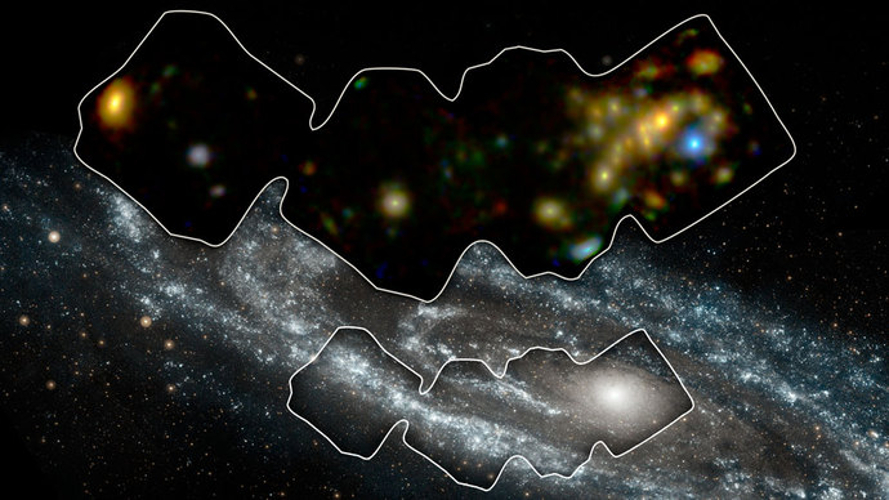
 Credit: NASA/JPL-Caltech/GSFC
Credit: NASA/JPL-Caltech/GSFC
A Hard Look at Andromeda
Our galactic neighbor, the Andromeda galaxy (alias M31), is an astronomical gold mine. It's the oldest thing you can see with the unaided eye, since light from the galaxy has taken more than 2 million years to reach us. It's near enough to us that powerful telescopes can resolve individual stars, but far enough away that we can make sense of the overall structure of the galaxy. Study of M31 allowed Edwin Hubble to show that the Milky Way is not the only galaxy in the Universe, resolving the "Great Debate" once and for all as to whether this object was simply a "Great Nebula" within the bounds of the Milky Way, or a majestic "Island Universe" in its own right. Now new observations with the NuSTAR high-energy X-ray observatory have added to the list of historically important observations of the Andromeda galaxy. The NuSTAR observations are unique since they are the first time a large portion of the galaxy has been observed by direct imaging at very high X-ray energies. The image above is a composite of an ultraviolet image of the entire Andromeda galaxy taken by NASA's Galaxy Evolution Explorer (GALEX), which emphasizes the UV emission produced by very hot stars in the disk of the galaxy. The inset shows the region mapped out by NuSTAR. Most of the detected sources seen by NuSTAR are X-ray binary systems consisting of a dead, collapsed star pulling matter from a gravitationally bound, normal companion star. The NuSTAR observations will help us understand the role X-ray binaries play in the evolution of galaxies.
Published: January 11, 2016
<
HEA Dictionary ● Archive
● Search HEAPOW
● Other Languages
● HEAPOW on Facebook
● Download all Images
● Education ● HEAD
>

Each week the HEASARC
brings you new, exciting and beautiful images from X-ray and Gamma ray
astronomy. Check back each week and be sure to check out the HEAPOW archive!
Page Author: Dr. Michael F. Corcoran
Last modified Tuesday, 27-Feb-2024 10:06:44 EST


